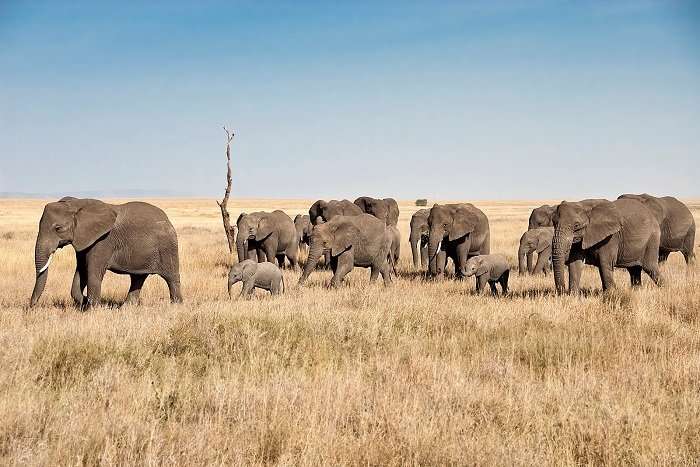Credit: Nanyang Technological University
Everyone knows that plants are eaten by animals, but how important is this basic process in structuring plant communities? In a study published this week in the Proceedings of the National Academy of Sciences, ASE Research Fellow Dr. Matthew Scott Luskin and co-authors, use data from across the world to investigate the impacts of plant-eating animals, known as herbivores, on land ecosystems.
The net effects of wildlife on vegetation is a lasting debate among ecologists. "Plants are primarily regulated by temperature, water, and soil nutrients. Nibbling by herbivores may be insignificant" explained Dr. Luskin. "Plants have also evolved defences to avoid being eaten, such as thorns and poisonous leaves, so losses to herbivores could be very small. And many plants depend on animals for pollination and seed dispersal, so herbivores could actually support plant populations" Luskin continued. Thus the question remains: do herbivores really matter?
The new study in PNAS looked for patterns among 123 previous experiments comparing plant communities in areas with and without animals. These experiments were distributed across the globe and usually used fences to keep animals out of the experimental plots.
For most ecosystems, the scientists found that herbivores strongly reduced plant abundances, plant biomass (weight), plant survival, and the ability for plants to reproduce. This provides evidence that wildlife is important for regulating plant communities like forests and grasslands. It also means that ecosystems where animals have become rare, such as where there is hunting, may have distinct vegetation characteristics from more protected habitats.
The study reports that the largest impacts of herbivores on plant biomass occurs in grasslands. This is because grasses are easier to digest and have less physical defences (thorns) than herbaceous plants, shrubs, or trees. However, there were no greater effects on plant survival in grasslands than other habitats, which suggests grasses are well adapted to losing some of their leaves.
But all plants are not equal in the eyes of a deer. Herbivores consume more palatable species, and this can lead to different types of vegetation in areas with abundant herbivores. Yellowstone National Park in the United States is a famous example because the presence or absence of deer and elk grazing produces distinct vegetation types. Likewise, the poaching of elephants in Africa allows tree species to regrow and ultimately leads to grasslands transforming into forests.
A major goal of the study was to determine how herbivores affected plant diversity, which is often measured by species richness - the total number of species- and species evenness - whether plant communities are dominated by a few common species.
"We wanted to examine if herbivores increased the number of different species that can coexist in the same habitat," said Dr. Luskin. "The most well adapted plants in each habitat could eventually outcompete all other species and take over, reducing diversity. Herbivores may disrupt this 'competitive exclusion' by eating the common species and providing space for other plants to persist. For example, when plant species 'A' starts to dominate an ecosystem, that also means that the herbivores will be more likely to encounter and eat that species. Suppressing species 'A' allows species 'B' to regain a foothold, thus increasing diversity" explained Luskin.
The scientists found that plant richness was not affected by herbivores but species evenness was increased. Thus, wildlife provides one of the mechanisms that maintains plant diversity. This infers that wildlife hunting may also reduce plant diversity.
The researchers explained that their study was the largest of its kind but still lacked sufficient information to examine other fundamental ecology questions or test for differences among particular habitats. For example, the impacts of wildlife on vegetation are dependent on how many animals there, their sizes, and their diets. However, this type of wildlife data is rarely measured in plant-focused experiments. The researchers see a bright future for additional experiments to add nuance to the broad patterns they reported.
More information: Shihong Jia et al. Global signal of top-down control of terrestrial plant communities by herbivores, Proceedings of the National Academy of Sciences (2018). DOI: 10.1073/pnas.1707984115
Journal information: Proceedings of the National Academy of Sciences
Provided by Nanyang Technological University























